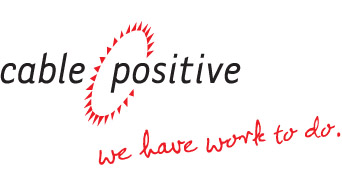Wednesday, December 19, 2007
Thursday, December 13, 2007
Rock The Vote
Housing Works, Gay Men’s Health Crisis (GMHC),<
"World AIDS Day is this Saturday, but you could also say that World AIDS Day is Election Day 2008. That's because our next President will have the opportunity and the responsibility to end AIDS," said Charles King, President and CEO of Housing Works. "She or he will have the tools to treat 33 million people living with HIV—including over a million Americans—around the planet, as well as the tools to stop the spread of the virus. We're here to build the political will to make that happen."
What is most important is to be aware of those candidates that fail to see the importance of ending the stigma surrounding HIV/AIDS as a means to ending it’s strangle hold on the world’s population.
The National Association of People With AIDS (NAPWA) in a December 10, 2007 press release highlighted some of Senator Mike Huckabee’s health policy regarding HIV/AIDS. “Twenty six years into this epidemic, such outrageous ideas as quarantine for all people with HIV/AIDS have no place in serious public policy debates of a free and enlightened society,” said Frank Oldham, Jr. NAPWA’s Executive Director. “This rhetoric only serves to heighten already severe stigma and discrimination against HIV-positive people and deter our collective efforts to engage the community in voluntary HIV testing, treatment, and other vital services.”
Kali Lindsey, NAPWA’s Director of Federal Government Affairs went on to day “Sentiments such as Huckabee’s that suggests isolation of persons with the HIV virus, further illustrate a clear disregard for the humanity of those communities who have experienced the greatest impact by this disease and the lack of a true investment in making a difference.”
Jeanne White-Ginder – the mother of the late Ryan White, an
I too would like to meet with any politician, especially one who is running for the office of president to discuss these matters. I’m sure we would agree on one thing: there is much more work to do in the fight against this disease.
Posted by
Cable Positive
at
6:50 AM
0
comments
![]()
Thursday, December 6, 2007
Empowering Youth Through Media Platforms
It isn’t something that you haven’t heard before. The sooner people know they have HIV, the sooner they can benefit from life-extending treatment and reducing the risk of infecting their partner. Well, that depends on whether they have health insurance or even access to health care but that is a different discussion.
In the
The Millennia’s are equal to the numbers of Baby Boomers and yet it can be argued that, in large part, the HIV/AIDS messaging used to reach Baby Boomers the past 26 years has not changed that drastically as we try to reach today’s young adults.
We talk about youth and the future they represent. Corporations spend large amounts of money researching how to reach today’s youth as a market and a community but the non-profit sector has been slow to follow suit until the last few years.
Motorola knows about messaging and reaching today’s youth market. They are continually innovative and cutting-edge in their approach and execution. They have always been tremendously supportive of both Cable Positive and its mission. I think that is a large part of why I am excited that The Motorola Foundation is taking the fight to protect our youth head on by supporting the creation of The Youth AIDS Media Institute (YAMI), Cable Positive’s newest program, with the largest grant Cable Positive has ever received in its 16 year fight against HIV/AIDS.
YAMI’s mission is to teach young people how to communicate HIV/AIDS awareness messages to their peers and empower them to make a tangible impact in their communities regarding HIV and AIDS education, prevention and awareness. With Motorola’s help we are excited to instruct students at YAMI to use the power of multi-platform media campaigns.
Most teens either own or have access to a cellular phone, with the help of Motorola, there is no telling what kind of innovations we can accomplish in the fight against this disease. “The growing use of text messaging provides an important opportunity to link people with simple and portable health information,” said Dr. Kevin Fenton, director of the
The details of YAMI will be unveiled at later today (Dec. 6th), along with a panel discussion exploring empowering youth through media advocacy, at the Paramount Pictures Screening Room in the
Posted by
Cable Positive
at
7:27 AM
0
comments
![]()


